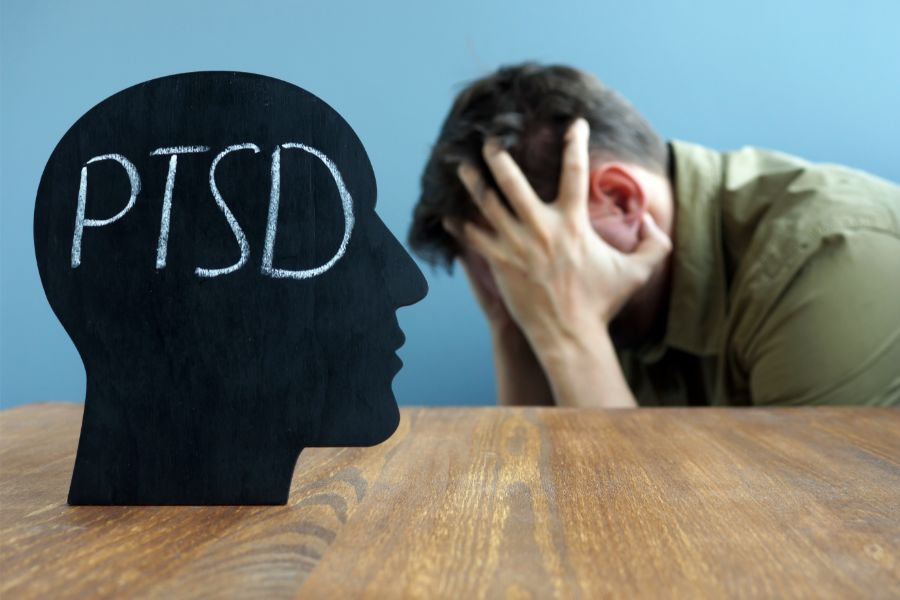Post-Traumatic Stress Disorder, or PTSD, is a condition that forms after experiencing trauma. Many people associate PTSD with soldiers coming home from war, but it can happen to anyone. It is a complex condition with many facets. Keep reading to learn more about the different types of Post-Traumatic Stress Disorder and how to get help for your symptoms.
Understanding Post-Traumatic Stress Disorder
Post-Traumatic Stress Disorder can occur after experiencing any type of trauma. Trauma can include:
- Sexual assault
- Physical assault
- Natural disaster
- Death of a loved one
- Witnessing a traumatic event
- Emotional abuse
- Toxic relationships
- Car accident
- Close to death
There are four main symptoms of PTSD. These include:
- Intrusion: Intrusive thoughts such as repeated, involuntary memories; distressing dreams; or flashbacks of the traumatic event. Flashbacks may be so vivid that people feel they are re-living the traumatic experience or seeing it before their eyes.
- Avoidance: Avoiding reminders of the traumatic event may include avoiding people, places, activities, objects, and situations that trigger distressing memories. People may try to avoid remembering or thinking about the traumatic event, and they may resist talking about what happened or how they feel about it.
- Alterations in cognition and mood: Inability to remember important aspects of the traumatic event, negative thoughts and feelings leading to ongoing and distorted beliefs about oneself or others (e.g., “I am bad,” “No one can be trusted”); distorted thoughts about the cause or consequences of the event leading to wrongly blaming self or other; ongoing fear, horror, anger, guilt or shame; much less interest in activities previously enjoyed; feeling detached or estranged from others; or being unable to experience positive emotions (a void of happiness or satisfaction).
- Alterations in arousal and reactivity: Arousal and reactive symptoms may include being irritable and having angry outbursts; behaving recklessly or in a self-destructive way; being overly watchful of one’s surroundings in a suspecting way; being easily startled, or having problems concentrating or sleeping.
Acute Stress Disorder
When exposed to a traumatic event, acute stress disorder symptoms begin within a month after the event. Nightmares, flashbacks, avoidance, and fear are all Acute Stress Disorder symptoms. If left untreated, these symptoms can worsen and develop deeper into Post-Traumatic Stress Disorder.
Uncomplicated Post-Traumatic Stress Disorder
Uncomplicated Post-Traumatic Stress Disorder is a highly treatable form of PTSD because its key differentiator from other forms of PTSD is that depression is not present. Many people do not become depressed after a traumatic event. However, they may still experience nightmares, avoidance symptoms, and more. Learning how to work through these symptoms, recognize them when they occur, understanding triggers, and learning the tools to overcome trauma will help sufferers live an everyday, healthy life.
Complex Post-Traumatic Stress Disorder
When an individual experiences more than one traumatic event throughout their life, Complex Post-Traumatic Stress Disorder can present itself. It requires additional treatment than other forms of PTSD because there is more than one trauma to address and help the brain “untangle.” One trauma may cause nightmares; the other may cause avoidance symptoms; another might be compounding all existing symptoms. Addressing both traumas at the same time in treatment will give the best chances for long-term recovery.
Comorbid Post-Traumatic Stress Disorder
Post-Traumatic Stress Disorder can trigger other conditions within the brain and body. These can include:
- Depression
- Chronic pain
- Anxiety
- Other mental health conditions
- Substance abuse
When an individual is experiencing one of these conditions and PTSD simultaneously, it is called Comorbid Post-Traumatic Stress Disorder. It is a very common form of PTSD that is treatable in a luxury treatment center.
Many individuals who have PTSD turn to substances to help alleviate their symptoms and self-medicate. Although a brief high may temporarily relieve symptoms, substance abuse worsens PTSD symptoms over the long term and can lead to a deadly overdose or suicide. This makes it very important to treat both PTSD and substance abuse at the same time in dual diagnosis treatment.
About Seasons in Malibu
No matter what type of PTSD you may be living with, it is essential to know that PTSD is a treatable condition. You do not have to live with the debilitating symptoms of your condition, or conditions, any longer. PTSD is progressive and can lead to a life of isolation, depression, substance abuse, and can also lead to death. If you or someone you love is suffering from PTSD, we can help you.
For more information, visit seasonsmalibu.com.


